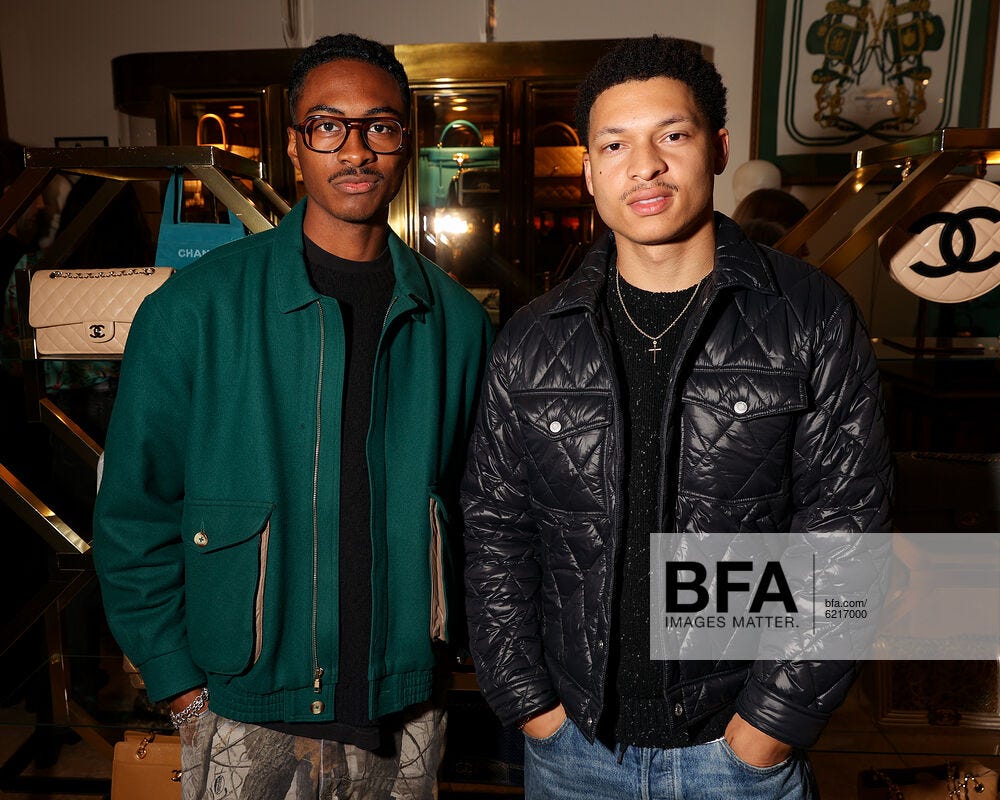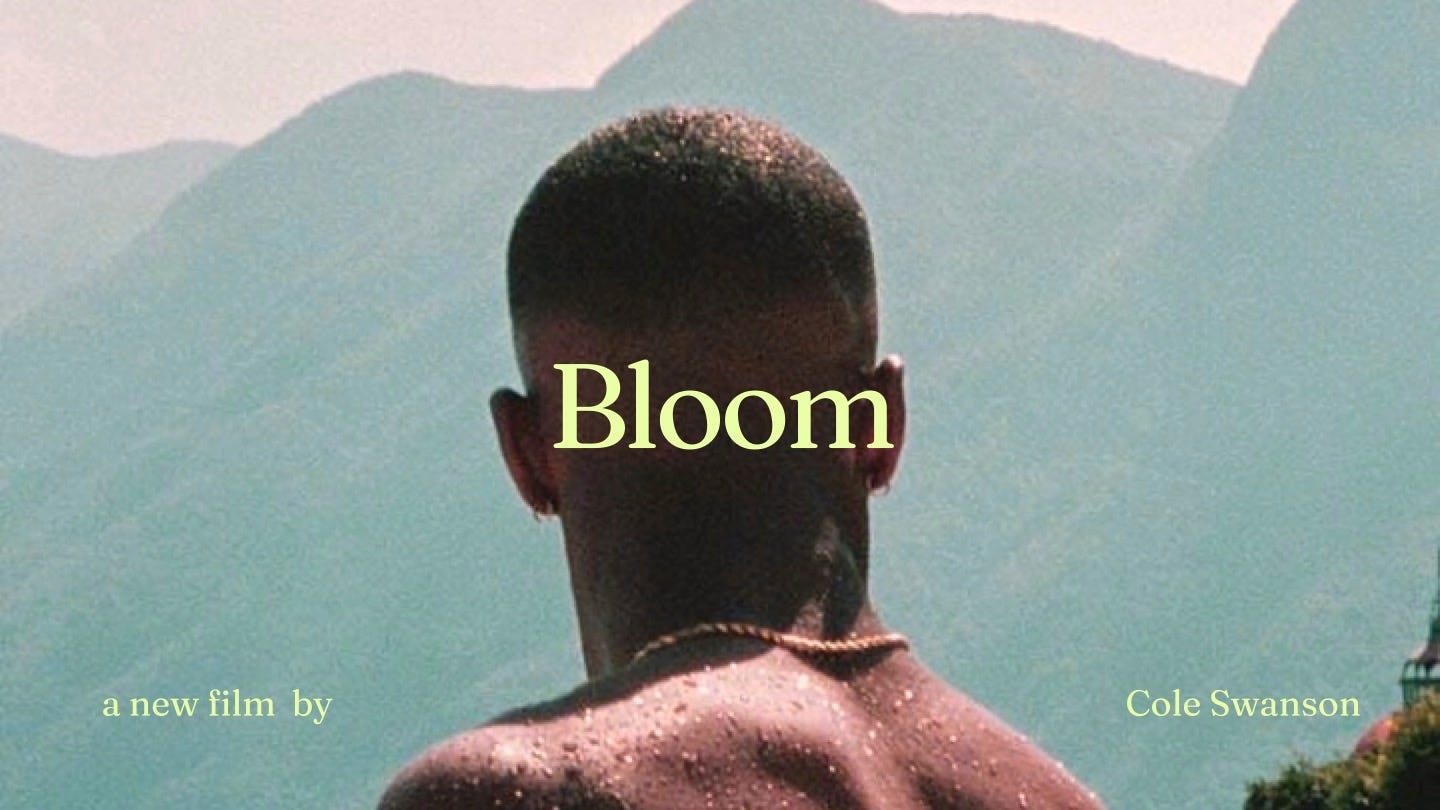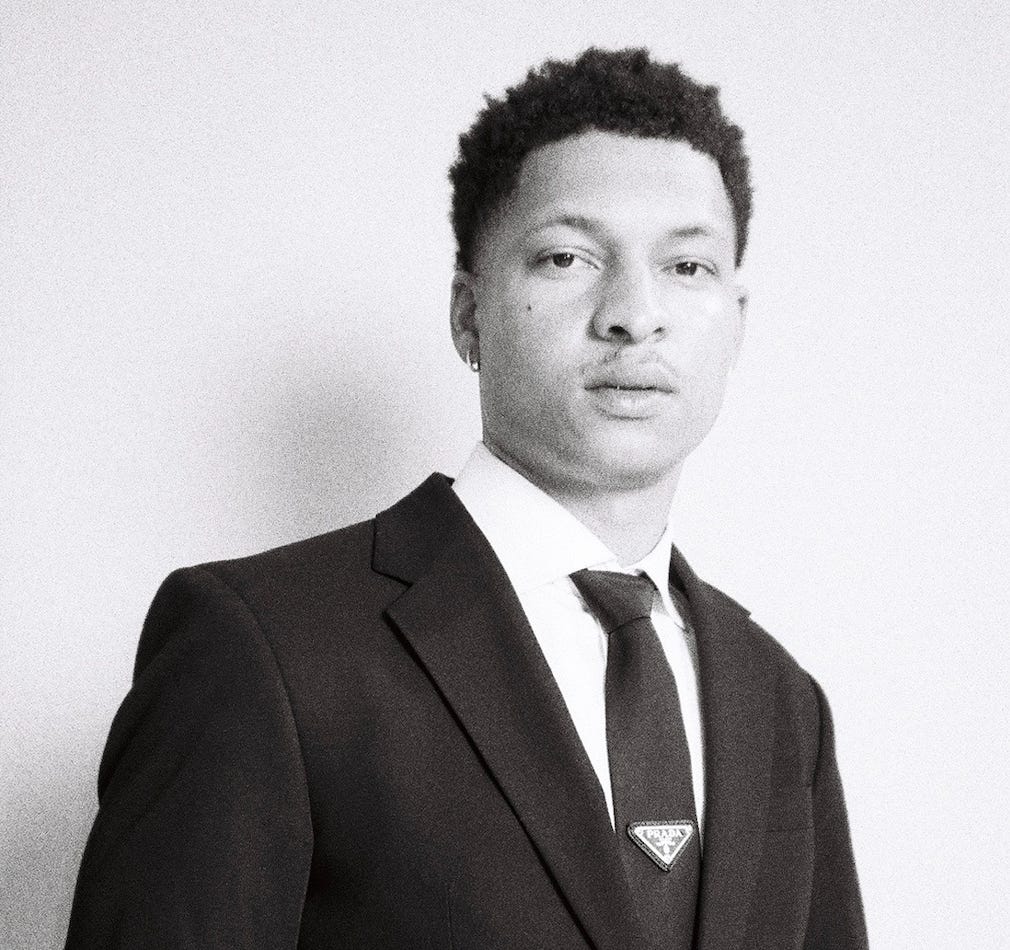How These Two Filmmakers Are Rewriting the Rules of Independent Film (And Winning)
Article Written By Brynne Norquist; Podcast Conversation with Cole Swanson, Braxton Prince, Tyler Knohl, and Brynne Norquist
Listen to our whole conversation here:
There’s a lot young filmmakers can learn from Cole Swanson and Braxton Prince. When I sat down with them, I didn’t just walk away inspired. I walked away with new insight on how to approach filmmaking in a modern lens.
In a time when debut films can feel like a shot in the dark, these two are rethinking the rules. Their feature Bloom is a case study in how to move smart. From early casting to building buzz before production, they’re showing what’s possible.
Cole, an NYU and National Film and Television School grad, made waves with his short Betty & Blue. Braxton studied film at Morehouse, worked at WME and 20th Television, and now manages Cole. One is a writer-director with vision; the other, a strategist who knows how to get that vision made and seen.
Why Bloom Feels Like Something We’ve Never Seen Before
Written and directed by Cole, Bloom follows a young Black musician, Ace, who receives a scholarship to study in Italy, where he’s drawn into the world of wealthy Black young adults. It’s a story of identity, ambition, and love, set against a gorgeous Italian backdrop.
“I did a homestay in northern Italy when I was 17, and there were no Black people there," Cole shared. "Flying back, I was like, how can I bring our story to this beautiful backdrop? Italy becomes a character on the page.”
Stylistically, Bloom is inspired by filmmakers like Éric Rohmer and films like La Piscine, but carries the tone of Y Tu Mamá También and Love Jones. “I wanted to pay visual homage to those films and combine that [style] with Black storytelling… Where are our versions?” Cole said. “I’ve never really seen that for us.”
“Why I fell in love with Bloom so much… it was dope to just have a story that didn’t need to include trauma porn or be so political,” said Braxton. Casting was a key early move. “We made a list of different actors for each role… and we just shot at everyone,” Braxton said. “Most of the calls that we made to these actors– the answer was yes.”
The cast now includes Kedar Williams-Stirling, Yara Shahidi, Keith Powers, and Renée Elise Goldsberry. Their approach is working because they’re clear on the world they’re building.
“This is my debut feature film, so I do need a bit more ammunition and well-known people to sell it,” Cole said. “I will die on the Bloom hill. But I need other people to be there with me.”
Marketing the Movie Before It’s Even Made
Cole and Braxton aren’t just making a movie, they’re building an experience. Bloom isn’t treated like a traditional film project. It’s treated like a world. And they’re inviting people in before a single frame is shot.
“It’s cool to have an idea and some actors attached, but it’s even better to have a plan for how this movie is going to get seen and how you’re going to market it,” Cole said.
That thinking shows up in every move. They crafted a proof-of-concept book in Italy so visually rich and intentional, it landed in the hands of Tyler, The Creator, Sean Baker, and Barry Jenkins.
At SXSW, they turned a pitch into a marketing moment. “We rented out a vintage car outside of the hotel where the pitch [to financiers] was... and it had a license plate that said Bloom and everything,” Braxton said. “It was strategic and it was smart... no one else was doing that.”
And the vision doesn’t stop at financing. From custom fashion collaborations to curated music drops, they’re designing a rollout that reflects the aesthetic and energy of the film itself.
“We know fashion is going to play a role in this film,” Cole explained. “You have a bunch of super rich Black kids running around Italy. You don't need to put it on a billboard. They're a walking advertisement.”
It’s more than basic marketing strategy that is outdated. It’s worldbuilding with purpose. And in my opinion? A literal masterclass for debut filmmakers. Create buzz without waiting for permission.
The Submission Struggle Is Real
Navigating the film festival circuit is hard. Even with a buzzy short like Betty & Blue and a strong team behind him, Cole still found the process confusing and isolating.
“I love festivals. I think they’re great. It’s weird— I have a love/hate relationship with them,” Cole shared. “Sometimes I don’t know what’s worth my dollar, what’s worth attending, what is the right festival for my project. And I think it’s incredibly difficult and frustrating to navigate that if you just don’t know.”
That uncertainty is more common than people think. As filmmakers, we’re expected to know which festivals matter, what they’re looking for, and how to play the game without ever being handed the rules.
“FilmFreeway is just this... you know, I call it a black hole,” Cole said. “You’re like, okay, maybe I’ll submit here, I don’t know, this one’s cheaper, or oh, this one’s Academy-qualifying... Because you’ll get rejected by like 15 festivals before you realize– oh, I shouldn’t have even submitted there.”
Hiike was built to change that. We’re building a platform that cuts through the guesswork. By tracking real data on premiere requirements, selection history, categories, rules, and more, Hiike helps filmmakers like Cole find the festivals that actually make sense for their film. Because submissions shouldn’t feel like a gamble. They should feel like a strategy.
“I had a mentor ask me, ‘Who’s the audience for your film?’” Cole shared. “I gave him a whole answer– music lovers, jazz fans– and he said, ‘No, it’s festival programmers.’ And if some of those programmers don’t look like me, they may not get it. That’s why this kind of transparency is so necessary.”
Hiike isn’t just making the festival landscape more efficient. It’s making it more equitable through transparent data points.
From Niche to Necessary
Right now, indie film feels like it’s stuck between two extremes. On one side, we’ve got $100M+ studio blockbusters that crash and burn (Snow White, Mickey 17). On the other, passion projects like Bloom: under-$2M films powered by purpose, precision, and community.
It’s giving white elephant vs. termite art (for my film history nerds in the crowd).
The stakes are high for everyone, but the frustration for filmmakers like Cole and Braxton lies in the disconnect between what the industry deems “viable” and what audiences actually respond to.
“I think the whole film is a risk,” Braxton said, “but every film is. That’s just the business. The frustrating part is that you’ll hear ‘no’ from someone, and then you look at something like Snow White—$200 million!—and it tanked. And you're like…what are we doing here?”
When Bloom was announced in Deadline, the reaction was electric. The internet rallied around it, not because it was trendy, but because it felt needed. “The response was insane,” Cole said. “People were commenting like, ‘We’ve been waiting for this.’ That’s proof of demand.”
Still, the gatekeepers call it “niche.” And that’s the core of it: this era isn’t just about getting projects greenlit. It’s about reclaiming the power to define what kinds of stories matter, and telling them the way we actually want to tell them.
What Emerging Filmmakers Can Learn From Cole and Braxton
Braxton’s advice? “Find your reason. Your drive. Your passion. Be a sponge. Soak everything up. And never be afraid to try something unfamiliar. You’ll grow faster than you think. Your network is the most valuable thing in this industry. Once you’re in, you’ve got to flourish in that space. Take every opportunity and stay a student.”
Cole’s? “Find your people. Lock in. Stick with the ones who see you and protect your vision. That’s how you grow your empire. That’s how you make it through the madness.”
They’re building on passion, trust, and a bold, individual strategy. And for the next wave of filmmakers, they’re building the blueprint.







